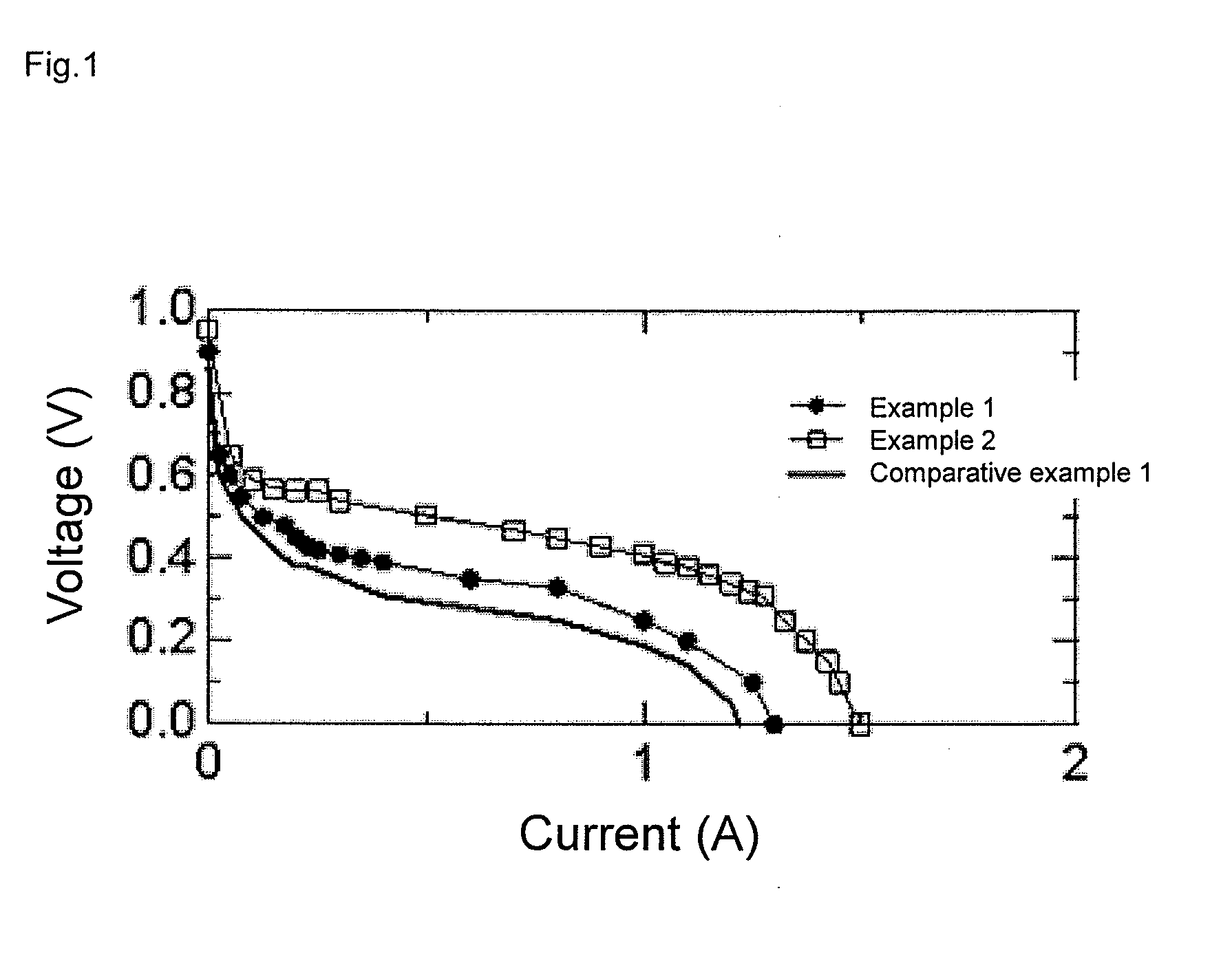Oxygen reduction catalyst and method for producing the same
- Summary
- Abstract
- Description
- Claims
- Application Information
AI Technical Summary
Benefits of technology
Problems solved by technology
Method used
Image
Examples
example 1
[0049]Tantalum carbonitride (TaC0.5N0.5) having a particle size of about 1 μm was introduced into a rotating electric furnace (rotary kiln). It was kept in a mixed gas of carbon monoxide gas (diluted with nitrogen as a carrier gas to 2% by volume) and oxygen gas (diluted with nitrogen as a carrier gas to 2% by volume) at 1000° C. for 10 hours to synthesize an oxygen reduction catalyst being a mixture of tantalum oxide and carbon.
[0050]It was confirmed from powder X-ray diffraction measurement that an oxide phase having a b-Ta2O5 structure was formed. The amount of oxygen defect was estimated by elemental analysis with the inert gas fusion infrared absorption method, and the amount of oxygen defect was found to be about 4 atm % (hereinafter, designated as %).
[0051]The cross section of the catalyst was observed by TEM to find out that fine carbon having a slightly grown graphite structure on the surface thereof was deposited. The average primary particle size was 6 nm. The coverage of...
example 2
[0052]A part of the oxygen reduction catalyst synthesized in Example 1 was kept in an ammonia stream at 670° C. for 3 hours to synthesize an oxygen reduction catalyst in which oxygen atoms of tantalum oxide and carbon atoms of carbon were each partially replaced with nitrogen atoms. It was confirmed from powder X-ray diffraction measurement that the oxide phase having a b-Ta2O5 structure was maintained. Herein, the diffraction angle was found to be shifted to a lower angle. The core level spectrum of Ta 4f was observed by X-ray photoelectron spectroscopy (XPS) using Al Kα monochromatic light, and a shift to the low energy side was seen and thus oxygen atoms were confirmed to be partially replaced with nitrogen atoms. Also with respect to the core level spectrum of C 1s, such a peak shift that carbon atoms could be confirmed to be partially replaced with nitrogen atoms was observed.
example 3
[0058]Ti metal was sputtered on the surface of the oxygen reduction catalyst synthesized in Comparative Example 1, and kept in a mixed gas of hydrogen gas (diluted with nitrogen as a carrier gas to 2% by volume) and oxygen gas (diluted with nitrogen as a carrier gas to 2% by volume) at 1000° C. for 10 hours. Thus, an oxygen reduction catalyst being tantalum oxide whose surface was partially covered with TiOX was synthesized.
PUM
| Property | Measurement | Unit |
|---|---|---|
| Electrical conductor | aaaaa | aaaaa |
Abstract
Description
Claims
Application Information
 Login to View More
Login to View More - R&D
- Intellectual Property
- Life Sciences
- Materials
- Tech Scout
- Unparalleled Data Quality
- Higher Quality Content
- 60% Fewer Hallucinations
Browse by: Latest US Patents, China's latest patents, Technical Efficacy Thesaurus, Application Domain, Technology Topic, Popular Technical Reports.
© 2025 PatSnap. All rights reserved.Legal|Privacy policy|Modern Slavery Act Transparency Statement|Sitemap|About US| Contact US: help@patsnap.com

